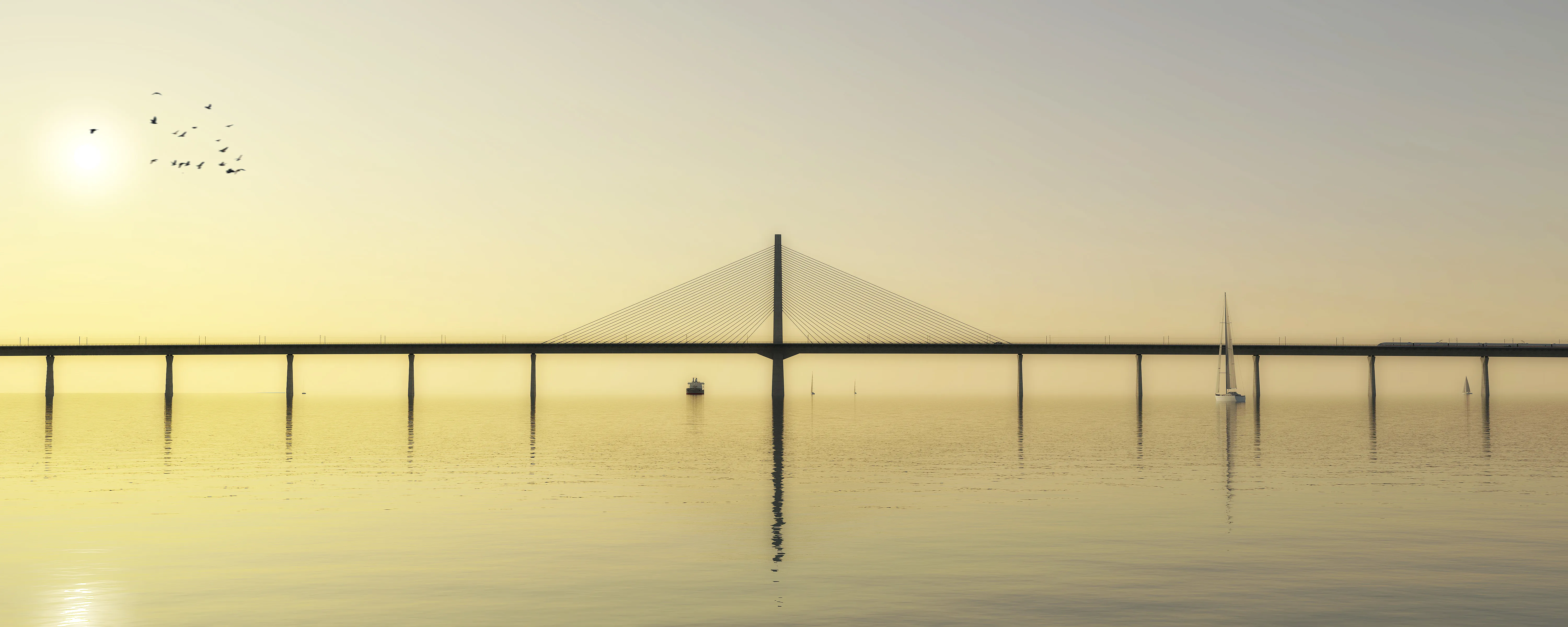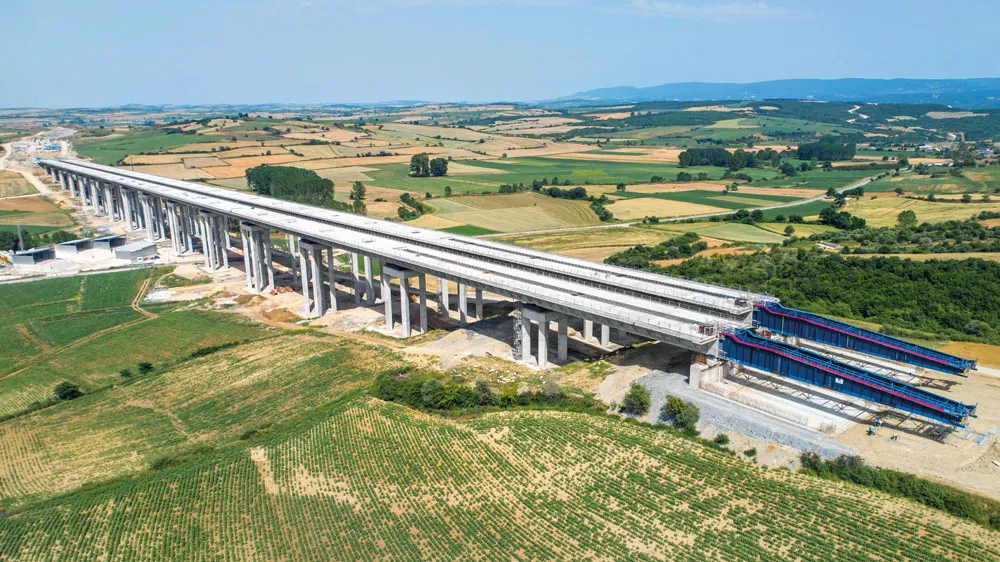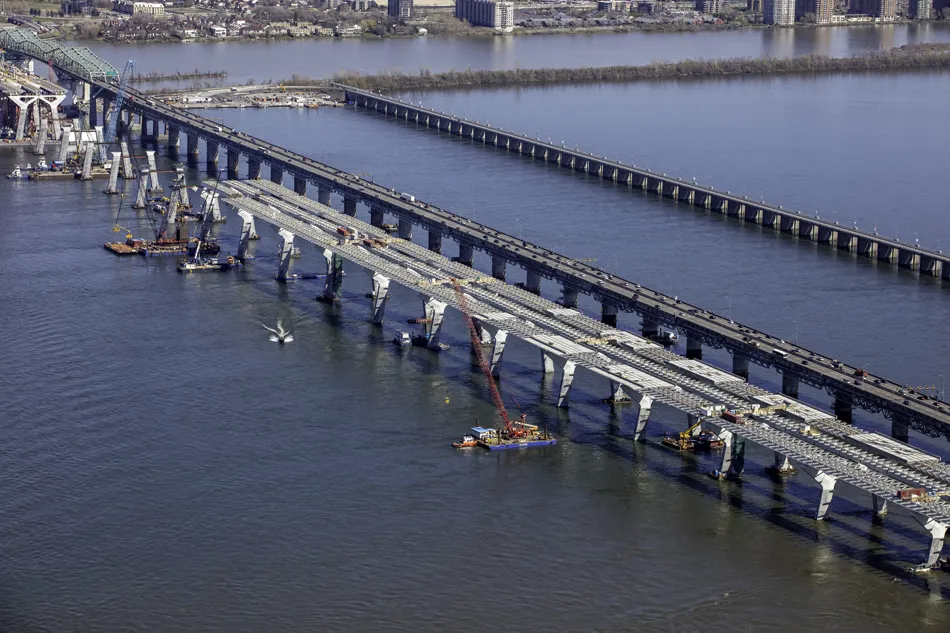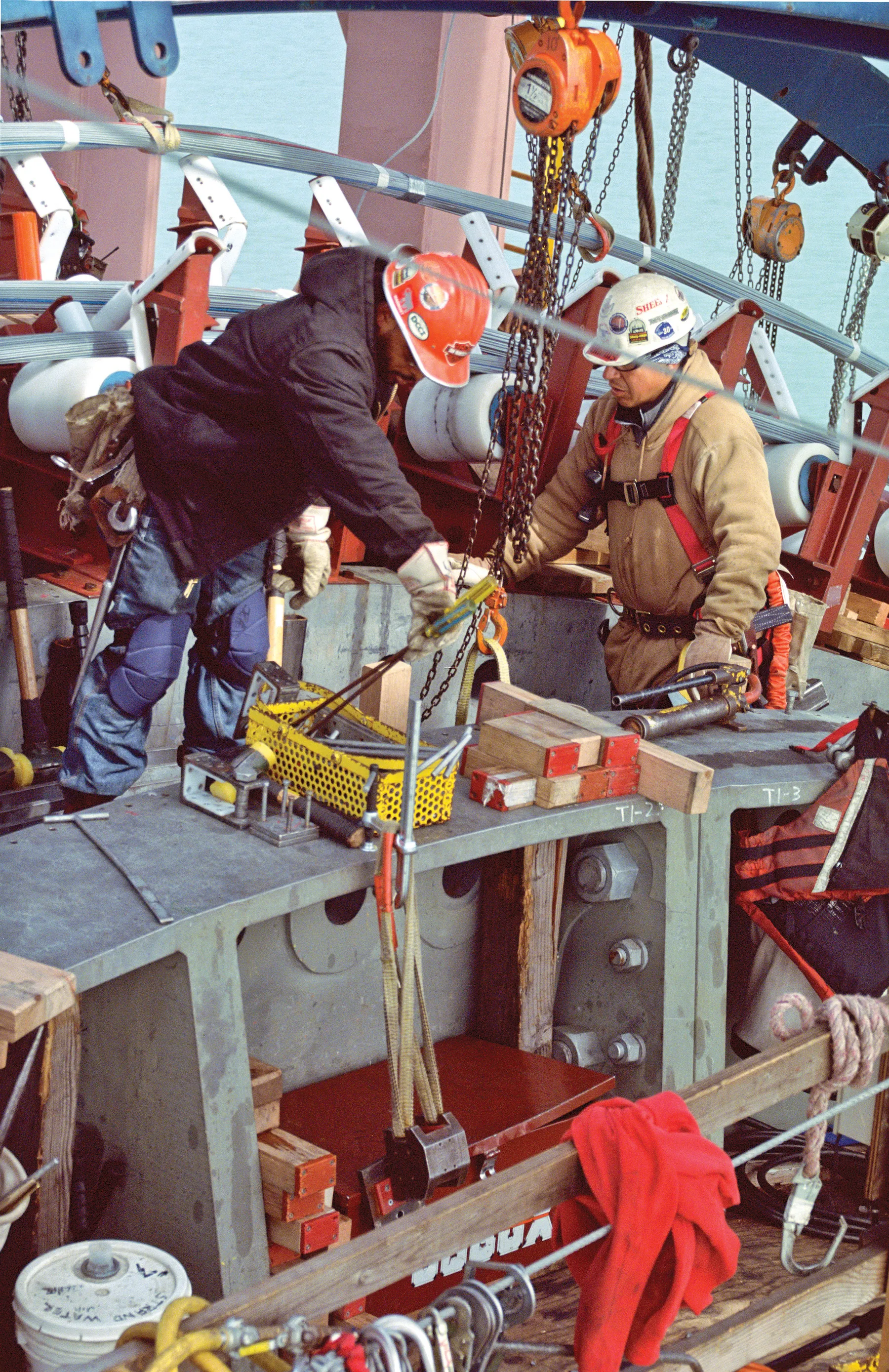TRAFFIC VOLUMES on Gran Canaria, the third largest of the Canary Islands, have been swelling rapidly in recent years, not least because of the boom in tourism. Among the routes most affected is the 32km long northern motorway GC-2 between Las Palmas and Agaëte, which has reached the limits of its capacity.
March 2, 2012
Read time: 3 mins
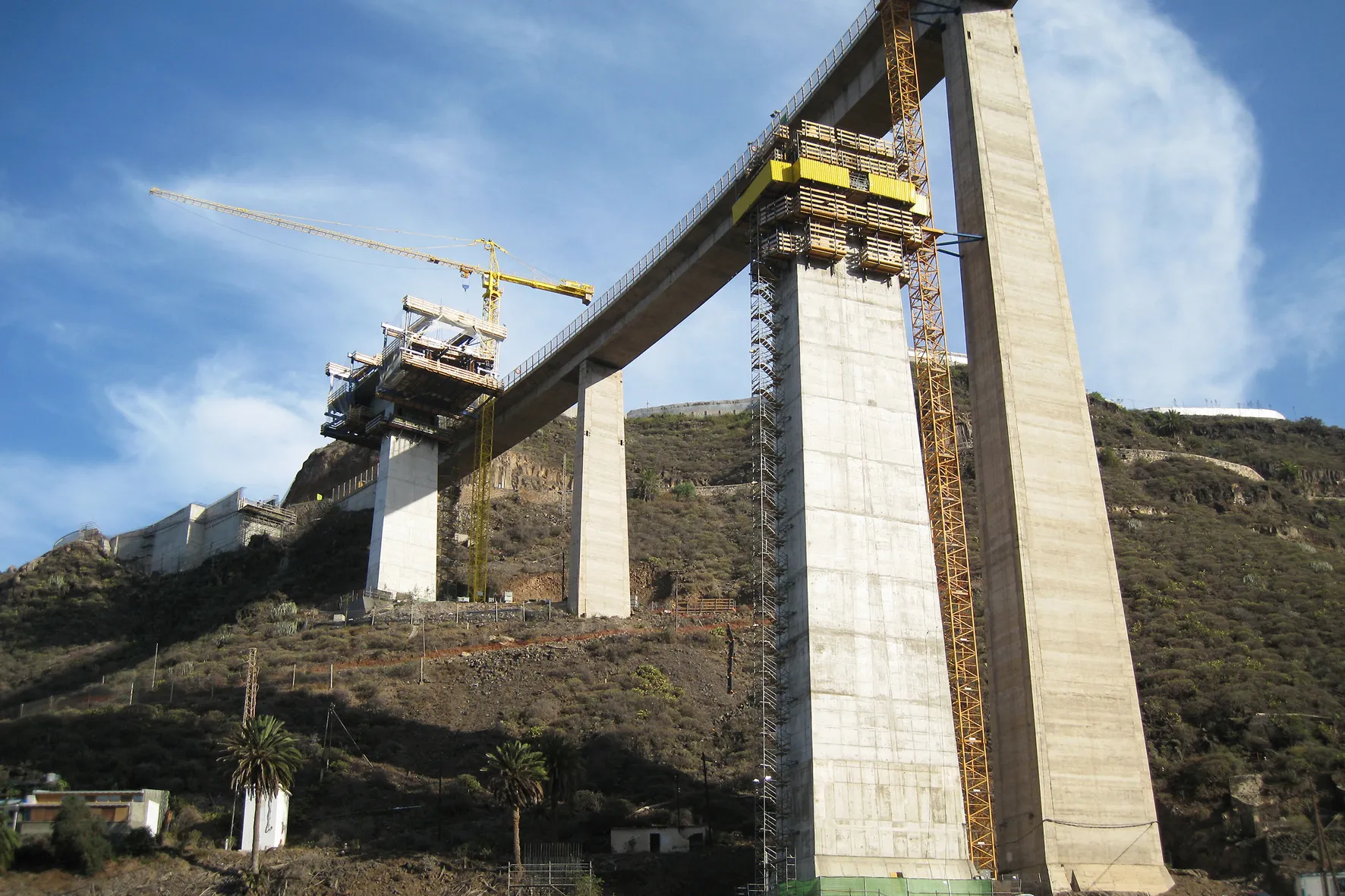
Traffic volumes on Gran Canaria, the third largest of the Canary Islands, have been swelling rapidly in recent years, not least because of the boom in tourism.
Among the routes most affected is the 32km long northern motorway GC-2 between Las Palmas and Agaëte, which has reached the limits of its capacity. Owing to the mountainous terrain, most of the new road is being routed through tunnels and across viaducts. With an overall length of 432m, a height of up to 104m and a sizeable longitudinal gradient, Viaducto 5 (Viaducto De Guia Pagador) is by far the most challenging viaduct in this major motorway building project.
The contracting consortium of980 OHL-García Álamo-Félix Santiago Melián opted for an all-in-one solution from 203 Doka, which came up with a technically sophisticated solution for constructing the massively sized pier heads. The consortium also turned to Doka for the high-performing automatic climbing formwork being used to build the four, up to 104m tall, bridge piers.
With access to the construction locations being so difficult and crane capacity being limited to 12tonnes, both the forming operations and the site logistics have had to be planned extremely carefully, with a resource-optimised construction workflow that is precisely coordinated right down to the last detail.
The pre-stressed, single-cell box girder superstructure of the Viaducto De Guia Pagador is being constructed in casting sections of up to 5.4m in length by two pairs of Doka
cantilever forming travellers (CFT) that have been modified. This is achieved economically by a simple extension of the vertical girder on the lower side. A telescopic inside formwork is used for adjusting to the varying cross-section.
A specially developed extra joint-reinforcing waling makes it unnecessary to cut back the massive steel walings of the top 50 large area formwork system section by section. According to Doka this concept is saving the contracting consortium more than 60% of the custom components that would otherwise be required.
All of 13m long, the massively sized pier heads are being constructed on a solution based on main support girders. This involves two parallel steel girders being placed in the longitudinal direction through box-outs in the top casting section of the hollow pier. On Viaducto 5, two 18m long and 1m high steel girders are being used for this purpose. They are cranelifted into the box-outs and pushed through the piers by a hydraulic cylinder. Next, a girder grille that includes the formwork for the bottom slab of the pier head is placed on the main support girders on either side of the pier. Access to the main support girders is provided by catwalks from the platforms fixed to the bridge pier. This allows the girder grilles to be erected in safety.
After the bottom slab has been cast, the transverse stiffeners, the webs and the deck slab are then cast using top 50 large area formwork elements. Following completion of the pier head, the cross-girders and the girder grilles can easily be hydraulically lowered and then lifted off the pier.
The two imposing main piers of the Viaducto De Guia Pagador are 102m and 87m tall (Piers 2 and 3 respectively), and were constructed using Doka's automatic climbing formwork SKE 50.
Among the routes most affected is the 32km long northern motorway GC-2 between Las Palmas and Agaëte, which has reached the limits of its capacity. Owing to the mountainous terrain, most of the new road is being routed through tunnels and across viaducts. With an overall length of 432m, a height of up to 104m and a sizeable longitudinal gradient, Viaducto 5 (Viaducto De Guia Pagador) is by far the most challenging viaduct in this major motorway building project.
The contracting consortium of
With access to the construction locations being so difficult and crane capacity being limited to 12tonnes, both the forming operations and the site logistics have had to be planned extremely carefully, with a resource-optimised construction workflow that is precisely coordinated right down to the last detail.
The pre-stressed, single-cell box girder superstructure of the Viaducto De Guia Pagador is being constructed in casting sections of up to 5.4m in length by two pairs of Doka
cantilever forming travellers (CFT) that have been modified. This is achieved economically by a simple extension of the vertical girder on the lower side. A telescopic inside formwork is used for adjusting to the varying cross-section.
A specially developed extra joint-reinforcing waling makes it unnecessary to cut back the massive steel walings of the top 50 large area formwork system section by section. According to Doka this concept is saving the contracting consortium more than 60% of the custom components that would otherwise be required.
All of 13m long, the massively sized pier heads are being constructed on a solution based on main support girders. This involves two parallel steel girders being placed in the longitudinal direction through box-outs in the top casting section of the hollow pier. On Viaducto 5, two 18m long and 1m high steel girders are being used for this purpose. They are cranelifted into the box-outs and pushed through the piers by a hydraulic cylinder. Next, a girder grille that includes the formwork for the bottom slab of the pier head is placed on the main support girders on either side of the pier. Access to the main support girders is provided by catwalks from the platforms fixed to the bridge pier. This allows the girder grilles to be erected in safety.
After the bottom slab has been cast, the transverse stiffeners, the webs and the deck slab are then cast using top 50 large area formwork elements. Following completion of the pier head, the cross-girders and the girder grilles can easily be hydraulically lowered and then lifted off the pier.
The two imposing main piers of the Viaducto De Guia Pagador are 102m and 87m tall (Piers 2 and 3 respectively), and were constructed using Doka's automatic climbing formwork SKE 50.


